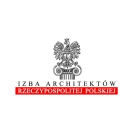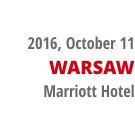Arch. András Krizsán, Ybl Prize-winning architect, principal of MODUM Építésziroda, Budapest, Hungary.
He graduated the Budapest University of Technology and Economics (BME), Faculty of Architecture. After graduation he worked for two years in state architecture firms, then was admitted to „Vándoriskola” of Union Kós Károly. During this postgraduate master school he worked with Imre Makovecz – internationally recognized architect – among others in building the Hungarian Pavilion on Seville Expo’92 in Spain. After finishing master school he joined of the Society of Village Development (FFT) and he was leading the architectural section. He is member of the board of the Hungarian National Rural Networks (MNVH), and former member of board (2007-2010) of the National College of Principal Architects (OFK). Now he is member of the Association of Hungarian Architects (MÉSZ), where he leads the UIA Habitat Hungary team and he is the organiser and leader of a civil academy called „CSÜTÖRTÖKI ISKOLA”.
Krizsán András is concerned with the modern organic architecture. His versatile architectural work can be found in different parts of Hungary, mainly on Balaton-felvidék. He gained Architectural Award of Excellence several times for his public and residential buildings. His accomplished buildings have the peculiarity of human proportion, the use of materials that are in harmony with the landscape, the creative conformity to the spirit of the place and the built environment. He designs modern organic buildings that do not imitate or quote, but where the spirit of the place and the time are in strong harmony. His works justify the fundamental thesis, that the organic architecture is not a style, but a way of thinking and behaviour, a special relation to life. In the centre of this mentality are the biological, phychological and cosmical needs of a human, the relation to the nature, the local genius and the speciality of the society, culture and tradition.
In 2006 he gained Kós Károly-Prize for preserving values and improving environment on settlements. In 2012 he was honoured with Ybl Miklós-Prize for his high quality architecture and in 2013 he won the PRO ARCHITECTURA Award, a prestigious official recognition by the ministry for outstanding architectural achievements of architects and designers of Hungary. The Central Building of Zanka designed by him was nominated for the European Union’s Award of Contemporary Architecture, the Mies van der Rohe Award in 2013.
Transformation and Extension of the Central Building of Zanka
Current building
The main building of Zánka New Generation Centre was built in the northern shore of Lake Balaton in the early 1970s, and its modernist style is typical of the era. Regarding architectural features it is a composition of a long-stretching ground floor service building and a tower building located behind it. The simple, white limestone-covered kubus of the seven-story tower standing free at the youth centre’s main entrance can be seen from a distance, reaching far above the crown of the surrounding trees. The main entrance of the building for public use is located at the southern side. The main entrance hall, reception and sales and marketing offices are located in the ground floor of the service building. You may find the institution’s library and a small museum room here, as well as a restaurant and a café in the eastern wing. The seven-storey office tower building there are service rooms, corridors and a youth hostel.
Planned changes
Besides maintaining its original features, the tower had been completely redesigned inside and out. Electrical network, inside area coverings, doors and windows have also been modernized. Guest rooms and offices have got renewed, and the total external stonework has also been renovated. The service building has not only been changed but expanded as well. Due to changing needs we had to rationalize the existing features of the ground floor, but a completely new architectural element has also been added to the first floor of the house. In line with the functional needs a new meeting room was built here that is connected to the southern facade corridor with a staircase. The upstairs meeting room is supplied with a kitchen, a technical room and a spacious south-facade terrace on the flat roof over the main entrance. The existing facility functions have been moved: the library and the museum area were transferred to the pavilioned west wing; IT-, sales and marketing offices were placed to the left side of the main entrance. During the internal transformation new offices and computer classrooms were added to the longitudinal eastern side of the service building, and the catering area got renovated and was given a new entrance. A new wind-sheltered front area and an entrance roof have been added to the main entrance of the central building. The building is accessible with wheelchair via the levelled entrance of the tower.
Shaping the building facade
The new design of the house got enriched with a special design that retains the modernist details of the original building, but at the same time it also humanizes it in a vivid continuation. It does not deny the existing features and the modern architecture of the building, but by understanding and continuing them it relieves the architectural logic of transformation based on the existing forms; this way a reinterpreted harmonious unity of values of the past and modern, expressionist architecture has been created. The most spectacular change in the building is embodied in the ground floor service building’s added floor in which the modern shell structure appearance and the upturned roof resembles to the waves of Balaton and balances the unity of the building. This is a new kind of dynamic component that reminds to Lautner’s or Niemeyer’s free, sweeping ferro-concrete design style. The arch supports recall the shapes of the surrounding water world in context with the landscape and the atmosphere of lake Balaton. The upward and inverted “Y” stands evoke a regular rhythm with the green, yellow and blue glass fields appearing here and there from behind the curtain wall, creating a homogeneous facade texture. The resulting horizontal facade duplication fills the redesigned horizontal building body with life and energy.
Awards:
PRO ARCHITECTURA AWARD (2013)
YBL MIKLÓS PRIZE (2012)
ORDER OF MERIT OF THE REPUBLIC OF HUNGARY (2012)
KÓS KÁROLY PRIZE (2006)
„Veszprém Megye Háza” – Architectural Award of Excellence
1997– Bezerédi – house/ Csopak
1998– Evangelical Conference Centre / Révfülöp
1999–Szigeti Bath / Révfülöp
„I am very honored to participate in the RIFF 2014 conference as a speaker. I look forward to visiting this event and I hope that in my presentation about the Zánka New Generation Centre I will give some useful information for everyone. The aim of my lecture is that I show a private inspection to the creation process of an architect. The logic and the aspect of redesigning and expanding a modern building will be presented. I would like to evoke the architectural character and quality of the landscape and the Balaton-coast. I will provide an overview to the values and the critisism of the original building. In my work I am looking for relation between the continuity of the neo-expressive modern architecture and the shape of the organic design. As for me it is always a great experience to share my thought with people from different parts of the world with the same interest. So I am very excited about the conference”, said András Krizsán, MODUM.
Text and photos curtsey of www.modum.hu and www.archdaily.com





